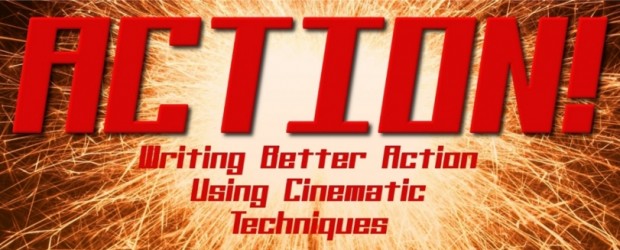(Excerpt from the Introduction to Action! Write Better Action Using Cinematic Techniques)
I’m going to go out on a limb here and assume everyone reading this has seen a movie. If you’ve never seen a movie, well, you probably shouldn’t be reading this book because you have a barn to raise and a beard to grow.
In the 19th Century and before, writers had far more leeway to write action than they do today. Outside of live performances, books were the only game in town when it came to entertaining people. Consequently, readers had to imagine whatever the writer described, sometimes without any frame of reference at all. Motion pictures changed all that. Suddenly, filmmakers could take their imagination and, through the use of carefully-planned stunts and special effects, film exactly what they were imagining. By committing those images to film, they shared their action scenes as they intended them to look with mass audiences. Instead of audiences having to imagine, they could sit passively and observe someone else’s imagination.
For example: The two men, one garbed in shining black and the other in soft brown, battled across the floor with their laser swords. I’ll bet most of you immediately pictured the Darth Vader—Obi-Wan Kenobi duel in Star Wars: A New Hope. Your memory of the scene as it was shot filled in the details without me describing them. If I’d written that sentence as part of a story that involved neither of those characters, you’d still think of the movie scene, because that’s how motion pictures have affected the modern reader—by giving us a common frame of reference. For a century now, from the earliest silent films loaded with dangerous and creative stunts, to the shootouts of the Westerns, to the car chases of the ‘60s and ‘70s, through the martial arts movie craze of the ‘80s and the CGI era after that, action scenes have become indelibly imprinting upon our minds. We’ve become a visually-oriented culture instead of an imagination-oriented one.
So what’s a modern writer to do to reach this jaded reading audience?
On this site, along with offering critiques of author-submitted action scenes, I will teach what I can about how to make your own action scenes appeal to modern readers. Over time, you’ll learn what defines action scenes, how to break them down into their component parts, the types of scenes and the associated qualities of each one. You’ll also learn how to craft remarkable scenes of your own.
Join me for this journey, won’t you?
